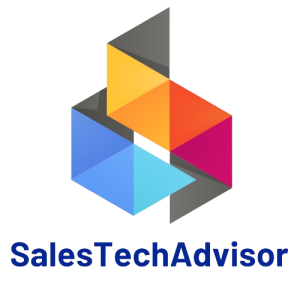In the world of business-to-business lead generation, data use has become essential to success. Through leveraging data to extract insights and apply them to their strategy, companies can achieve unprecedented success. We’ll look at seven data-driven lead generation tactics in this article that have worked well for producing B2B leads.
𝟏. 𝐃𝐚𝐭𝐚 𝐒𝐞𝐠𝐦𝐞𝐧𝐭𝐚𝐭𝐢𝐨𝐧 𝐁𝐚𝐬𝐞𝐝 𝐨𝐧 𝐂𝐨𝐧𝐬𝐮𝐦𝐞𝐫𝐬: Developing a personalized approach requires a thorough understanding of your target audience. Businesses can classify prospects based on their needs, interests, and actions by utilizing efficient data segmentation approaches. Because it enables the delivery of extremely relevant content and offers, this personalized strategy dramatically increases engagement and conversion rates.
𝟐. 𝐏𝐫𝐞𝐝𝐢𝐜𝐭𝐢𝐯𝐞 𝐀𝐧𝐚𝐥𝐲𝐭𝐢𝐜𝐬 𝐟𝐨𝐫 𝐁𝐞𝐭𝐭𝐞𝐫 𝐓𝐚𝐫𝐠𝐞𝐭𝐢𝐧𝐠: Predictive analytics makes use of past data to predict future trends and actions. Businesses can predict the actions of possible leads and modify their strategy by looking at historical trends. This makes it possible to run marketing campaigns that are more precise and targeted, which raises conversion rates and ROI.
𝟑. 𝐀𝐜𝐜𝐨𝐮𝐧𝐭-𝐁𝐚𝐬𝐞𝐝 𝐌𝐚𝐫𝐤𝐞𝐭𝐢𝐧𝐠 (𝐀𝐁𝐌): The goal of account-based marketing, or ABM, is to locate and target particular high-value accounts. Businesses can develop hyper-personalized strategies to interact with important decision-makers in these accounts by utilizing data insights. Deeper connections with prospects are made possible by ABM, which boosts revenue growth and sales chances.
𝟒. 𝐋𝐞𝐚𝐝 𝐒𝐜𝐨𝐫𝐢𝐧𝐠 𝐚𝐧𝐝 𝐏𝐫𝐢𝐨𝐫𝐢𝐭𝐢𝐳𝐚𝐭𝐢𝐨𝐧: Lead scoring is the process of valuing leads according to their traits and actions. Businesses can rank leads according to their propensity to convert by examining data such as firmographics, engagement metrics, and demographics. This maximizes productivity and outcomes by ensuring that sales and marketing efforts are focused on leads that have the greatest potential.
𝟓. 𝐂𝐨𝐧𝐭𝐞𝐧𝐭 𝐏𝐞𝐫𝐬𝐨𝐧𝐚𝐥𝐢𝐳𝐚𝐭𝐢𝐨𝐧: Customizing information and message to each prospect’s preferences and needs is known as data-driven content personalization. Through the examination of data such as demographics, preferences, and previous interactions, companies may provide their target audience with extremely relevant and captivating content. This raises interaction, fosters trust, and eventually boosts conversions.
𝟔. 𝐌𝐚𝐫𝐤𝐞𝐭𝐢𝐧𝐠 𝐀𝐮𝐭𝐨𝐦𝐚𝐭𝐢𝐨𝐧: Platforms for marketing automation use data to optimize and streamline marketing procedures. Businesses may send timely and relevant communications to prospects at every point of the buyer’s journey by automating repetitive processes and workflows. This guarantees consistent and tailored engagement with leads while also saving time and money.
𝟕. 𝐂𝐨𝐧𝐭𝐢𝐧𝐮𝐨𝐮𝐬 𝐏𝐞𝐫𝐟𝐨𝐫𝐦𝐚𝐧𝐜𝐞 𝐌𝐨𝐧𝐢𝐭𝐨𝐫𝐢𝐧𝐠 𝐚𝐧𝐝 𝐎𝐩𝐭𝐢𝐦𝐢𝐳𝐚𝐭𝐢𝐨𝐧: To maintain efficacy, data-driven lead generation tactics need to be continuously monitored and optimized. Businesses are able to pinpoint areas for improvement and adjust their tactics by monitoring critical data like conversion rates, return on investment, and client acquisition expenses. This iterative process optimizes outcomes and promotes ongoing enhancement of lead generating initiatives.
To sum up, data-driven approaches are critical to B2B lead generating success. Businesses may tailor their marketing campaigns, obtain insightful knowledge about their target market, and streamline their operations for optimal effectiveness and output by utilizing data. Businesses may improve lead generation, conversion rates, and overall business growth by adopting these seven data-driven techniques.






